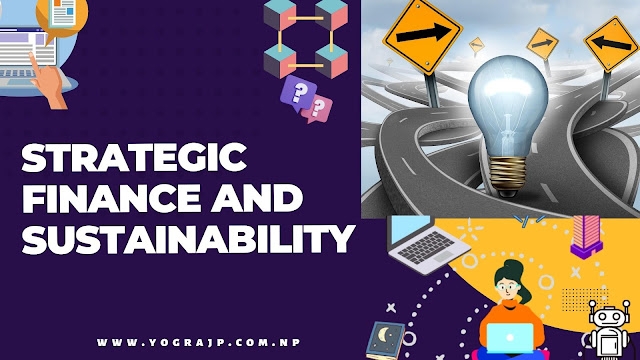Strategic Finance and Technology
Businesses depend significantly on technology to achieve a competitive edge. In today’s environment, most successful organizations have a technical edge over their competition. However, much like commercial strategy, the technical strategy also entails long-term decision-making. Technological advantages are not established overnight. Instead, they are the consequence of decision-making over lengthy periods. This is the reason why it is necessary to establish consistency between company strategy, financial strategy as well as technical strategy.
In this post, we will examine what technology strategy is and how it may be maximized using the concepts of strategic finance.
The Relationship between Financial Strategy and Technological Strategy
The technical strategy ideally relies upon the number and character of resources that the firm has to spare for growing its business. This, in turn, relies upon the financial capacity of the company. Hence, there is a direct relationship between strategic finance and strategic technology. However, the relationship is not one way. This suggests that it is not just money, that affects technology but also the other way round. For instance, corporations that have more sophisticated technologies generate greater profits, and these revenues may then be plowed back to enhance the technology even more. Hence, it may be claimed that money and technology have a cyclic connection. This cyclic link is also an essential aspect of the entire company strategy. Many top firms in the world have made technology their main expertise. This may be challenging as opposed to other examples as here there are three sorts of tactics that need to be coordinated.
The Link between Technology Strategy and Business Strategy
The relationship between technology strategy and the entire company strategy is pretty easy. This is because technology helps the business strategy and not the other way round. It is customary for many organizations to discover their technical expertise and then hunt areas where they have an edge over their rivals. The corporations then join these markets and obtain beneficial positions. Once again, to be able to implement this plan, there has to be good collaboration between the strategy, finance as well as technology departments. This implies that there must be a continuous flow of information throughout different departments.
The Technological Choice
The operations of any organization are dependent on a vast array of technologies and sub-technologies. It is not feasible for the corporation to update each and every technology. This is because companies have resource restrictions. They do not have endless sums of cash at their disposal. Instead, they have a limited number of cash whose application has to be prioritized. Hence, firms have to identify which technologies are crucial to their competitive strategy.
To be able to make the above-mentioned judgments, firms should be able to know precisely how much cash, they will have at their disposal. This is the reason why technology strategy can only be formed in combination with the entire financial plan of the organization.
Firms need to assess the importance of their technical demands before they go about building a technology strategy and aligning it with their business and financial plan. If the organization is unable to do so at the early stages, a lot of the work that they do in the latter phases may wind up being squandered.
Internal R&D vs. Outsourced Technology
Companies that have a technical advantage over their rivals need not necessarily create this technology in-house. A lot of the time, organizations associate with other firms who operate as their technology consultants. This is because corporations may recognize that they do not have the technical human resources which are essential for this activity. As a consequence, businesses may elect to just acquire the patents or cooperate with other technology enterprises in some other fashion. There are financial benefits to utilizing this method. The company may avoid making hazardous research and development expenditures. Instead, they may right immediately acquire technology that is tested and proved to be helpful. However, the more proven and dependable a technology is, the more costly it gets. Also, it is then freely accessible to everyone including the firm’s rivals.
Using Scalable Technologies
In other non-strategic sectors, firms might likewise elect to forgo upfront expenses. This may be done by leveraging cloud-based services such as software-as-a-service. In such circumstances, organizations do not have to spend enormous quantities of money to upgrade their technical architecture. Instead, they may employ “pay as you go” models. This enables the organization to scale its needs up and down. The expense of deploying and maintaining the servers is also avoided.
Hence, organizations may adopt a broad variety of operating structures that have quite varied financial ramifications. The specific mix of these arrangements is dependent on the technical approach. This technology plan is based on the long-term financial strategy and also impacts the business strategy.
More Articles are below:
- 1. Strategic Finance and Sustainability
- 2. Strategic Finance and Competitive Advantage
- 3. Strategic Finance and Capital Structure
- 4. What is Strategic Budgeting?
- 5. Strategic Capital Budgeting
- 6. Profit Maximization vs. Wealth Maximization
- 7. Strategic Financial Management’s Drawbacks
- 8. Advantages of Strategic Financial Management
- 9. The Strategic Financial Planning Process
- 10. Principles of Strategic Financial Management
- 11. Strategic Financial Management – Meaning and Its Functions


